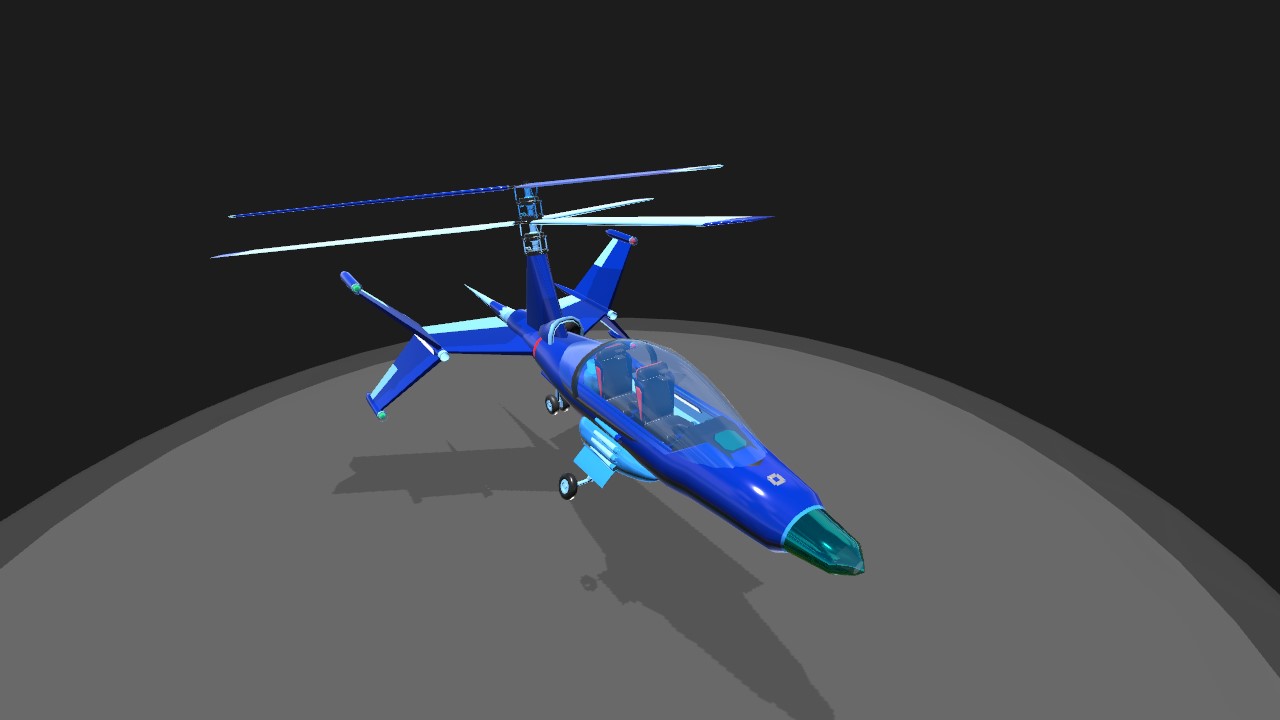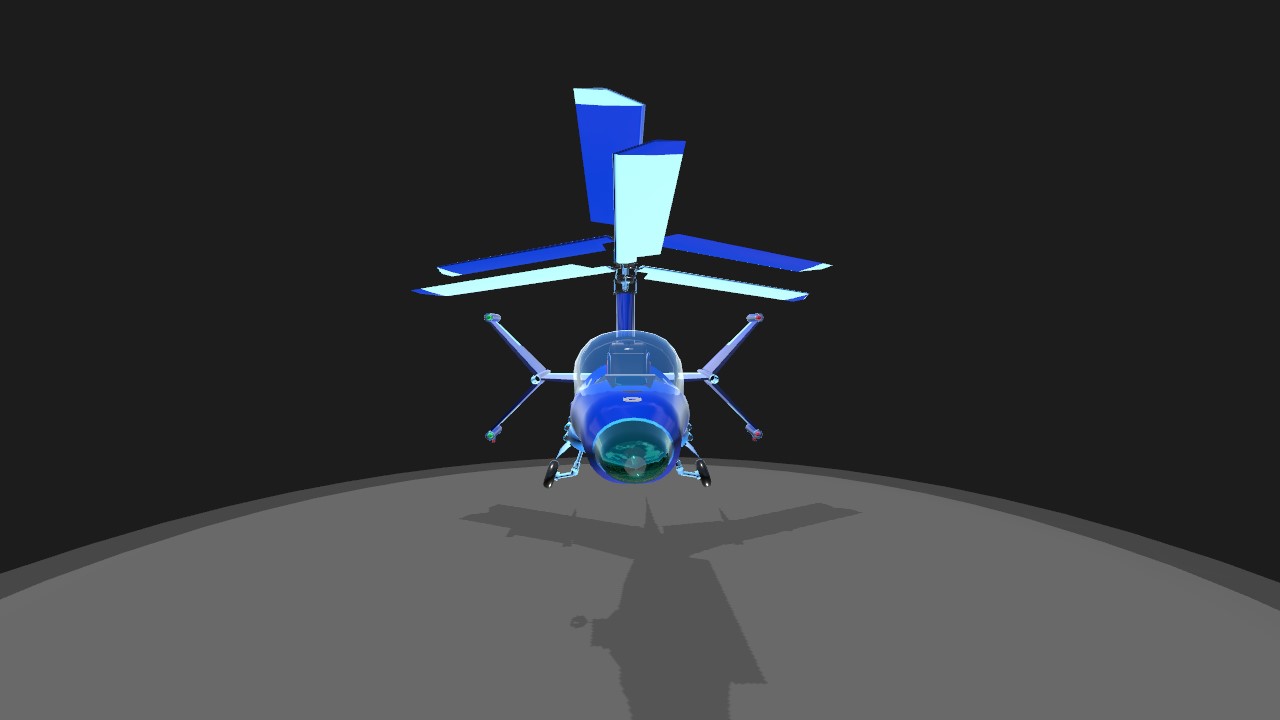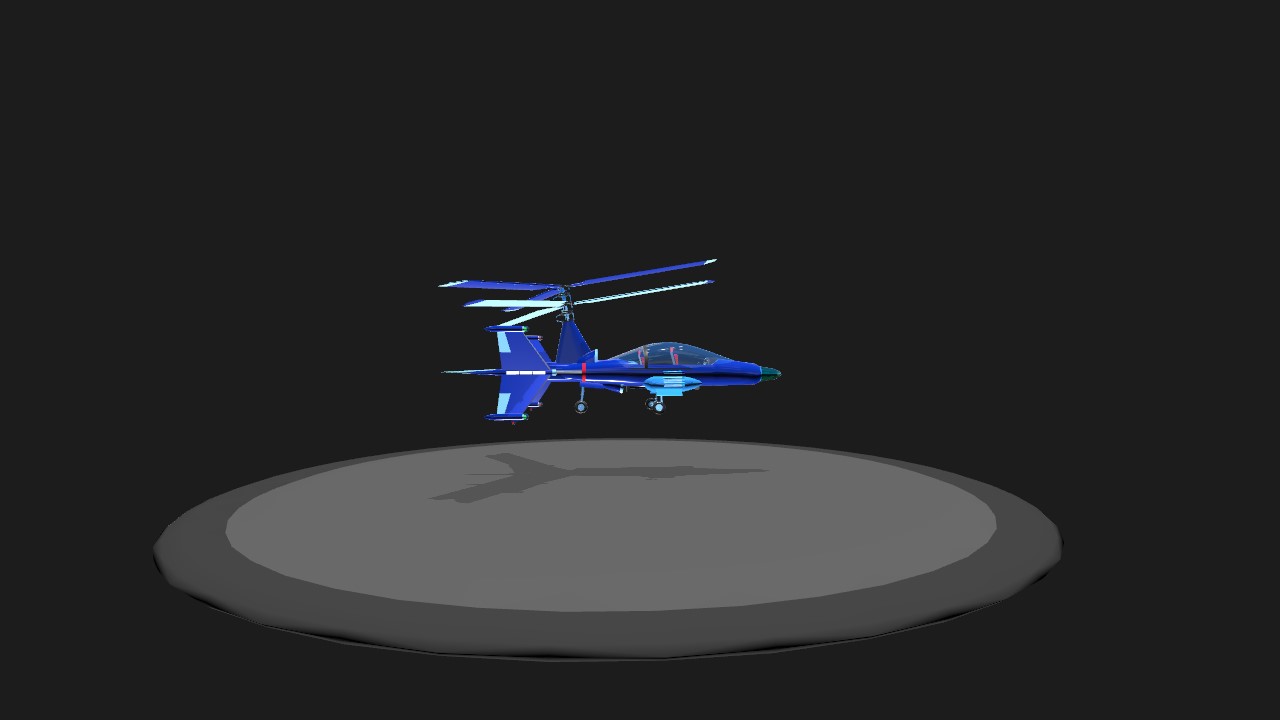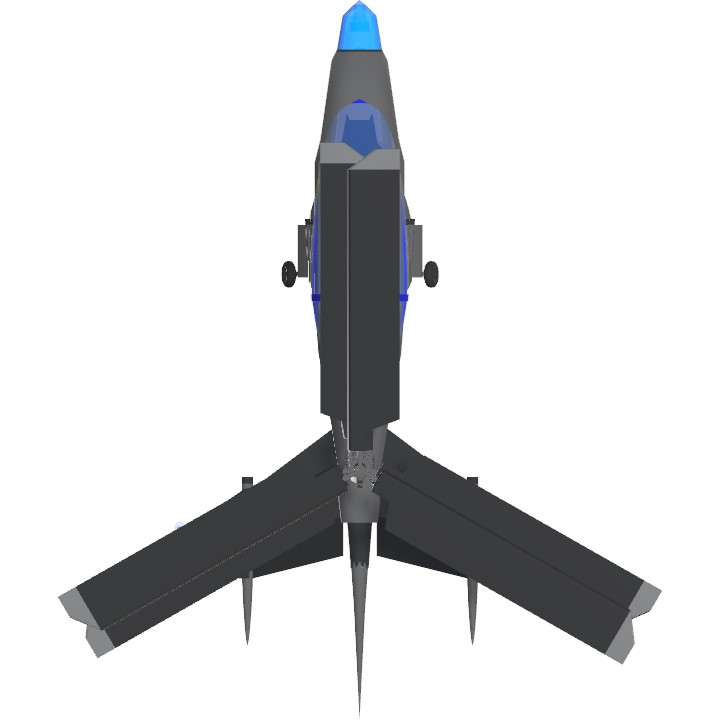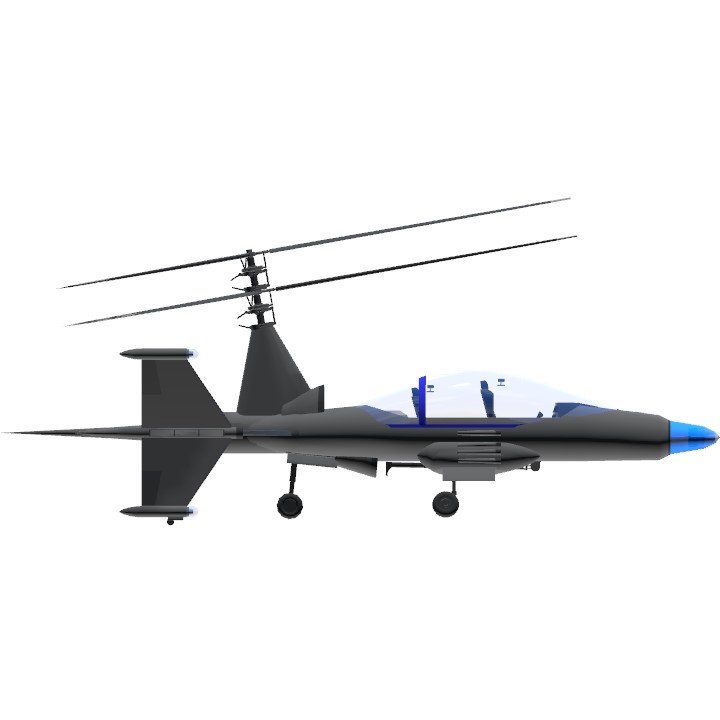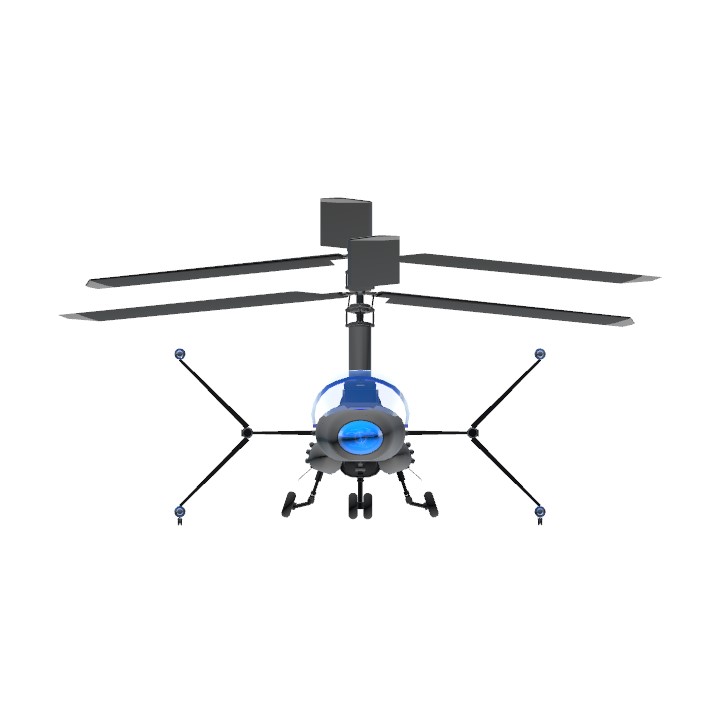Working on getting this guy ready for VR. A little temperamental, but surprisingly stable in autorotation if you watch your airspeed and cyclic
Instructions for this Platform will remain the same unless a major design change occurs.
The Convair AutoDrake is an AutoGyro, but with more flexibility and range than a standard single rotor propeller-driven rotorcraft.
By utilizing a jet turbine, thrust may be applied in the traditional manner, but shaft power may also be directed to the coaxial rotors, to stabilize them at higher airspeeds, as well as to an onboard reaction wheel. This final item is critical to escaping flat spins, if one is induced through erratic input or incorrect tailwind correction, by way of forced yaw input at negligible forward airspeed.
When taking off, the first step is to disengage the Reaction Wheel [Gyro]. The Gyro is spooled during preflight via the APU, and is thus active and engaged by default.
When taking off from your local airstrip, the Rotor [Shaft] Angle should be set as far back as possible, and parking brakes disengaged [for equipped models]. The [Main Turbine] should be set to a minimum of 25% throttle, and the central gear will be used to apply Yaw through taxi. Operator will observe Rotor RPM, maintaining zero collective pitch until such time as Rotor RPM climbs through 400 RPM, and may rotate at neutral collective provided an Indicated Airspeed of 85 mph or greater, not to exceed 110 mph at takeoff, to minimize chances of rearward pitchover.
When onboard sea vessels, or in a headwind, an Indicated Airspeed of 15-20 mph is sufficient to begin autorotation for hover purposes. The Rotor [Shaft] Angle should be set as far back as possible, and parking brakes engaged [for equipped models, otherwise allow bypass thrust at ~1%, remaining aware of vicinity, engaging toe brake if able]. Operator will observe Rotor RPM, maintaining zero or slightly negative collective pitch until such time as Rotor RPM climbs through 325-350 RPM. At this point, experienced operators may perform a collective hover after setting turbine throttle to 40%.
Once airborne through a minimum ascent of 200 ft, operator should gradually return collective to its neutral detent, remaining aware of craft tendency to pitch forwards, while applying slight back cyclic pressure. At this point, gear may be retracted, and should stay retracted if planning a water landing, or if the flight plan includes airspeeds in excess of 150 mph, or if performing aerial inspection.
When beginning Short Final, reduce turbine throttle to 15%, and return Rotor [Shaft] Angle to rearmost setting, and Collective to neutral. Gear may be deployed at airspeeds less than 250 mph. As airspeed drops, suddenly, monitor rotor speed and feather Collective Up momentarily if rotor RPM exceeds 750 rpm. Avoid the temptation to pitch up during this procedure unless you have a full length landing strip [800ft] as the sudden increase in altitude creates uncertainties in glide. when nearing the ground [100 ft] flare lightly, then hold the cyclic pitch until safely on the ground. Experienced operators may increase collective to as much as 25% [in 5% increments rec'd], though the landing gear are rated to handle a vertical dampening rate of up to 20 mph.
Convair recommends not exceeding a vertical landing speed of 15 mph for the purposes of comfort. Gear Overhaul is hereby recommended in event of performing a landing descent rate in excess of 30 mph, and this must include an inspection of the rear gear pods, all wing roots, and the tail boom.
[EMERGENCY INSTRUCTIONS]
If airborne, and over water with a minimum recommended altitude of 500 ft,
1-Reduce all throttle inputs to neutral,
2-Increase Rotor [Shaft] Angle to 75%
3-Decrease Indicated Airspeed to <100 mph
[Unless you have equipped your unit with a HANS device for all persons, in which case an airspeed of 200 mph is arrestable under severe duress]
4-Dump any remaining turbine energy by way of engaging Gyro
5-!!! Arm [Chute] !!!
6-Perform following two steps in quick succession;
-Increase Collective Pitch to MAX
-Fire [Chute]
The [Chute] may be armed and fired immediately at appropriate altitude and airspeed if ALL rotor blades have been successfully [or through catastrophic damage] purged from the shaft.
Specifications
Spotlights
- This craft is curated
General Characteristics
- Created On Windows
- Wingspan 22.1ft (6.7m)
- Length 26.2ft (8.0m)
- Height 12.1ft (3.7m)
- Empty Weight 4,768lbs (2,163kg)
- Loaded Weight 5,103lbs (2,314kg)
Performance
- Power/Weight Ratio 6.384
- Wing Loading 83.4lbs/ft2 (407.4kg/m2)
- Wing Area 61.1ft2 (5.7m2)
- Drag Points 2732
Parts
- Number of Parts 129
- Control Surfaces 6
- Performance Cost 991

